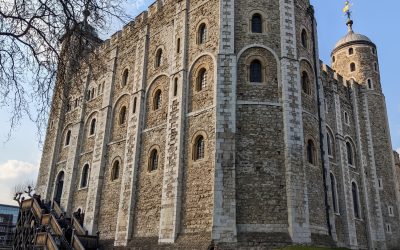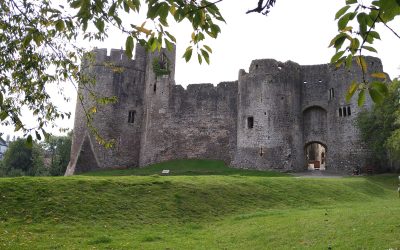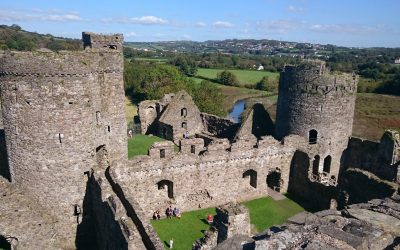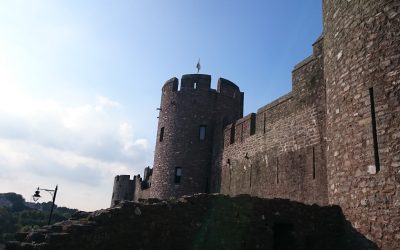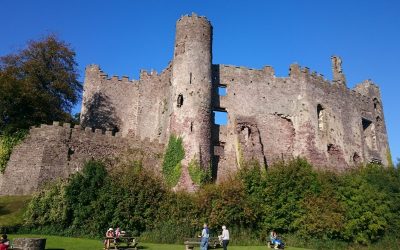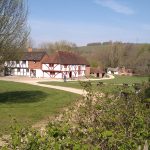A castle is a large, fortified building with thick walls that is usually used as a home for royalty or nobility. Castles were built to protect the people who lived in them from attacks. They were also a way to show how important the family was to other people.
The first castles were built in Europe in the Middle Ages. The Citadel of Aleppo in Syria is said to be the world’s oldest and largest castle. It was built around 3000 BC. What we think of as a castle today came to England in 1066, when William the Conqueror led the Norman invasion. The Normans built castles all over the country to keep control of the land they had conquered and to keep the Anglo-Saxons happy.
Most castles are made of stone, but earlier Motte and Bailey castles were made of timber. Timber castles were great; they were cheap and very quick to build, but they weren’t very defensive as most were burned down. They were also susceptible to rot, so they were rebuilt in stone.
Many castles had moats, drawbridges, and other defensive features to protect against attackers. These days, castles are no longer defensive structures but popular tourist attractions because of their long histories and beautiful architecture.
Castle defences
Castles were built to defend against attackers and keep them out, so they were purposely built with defences in mind. Some of the most common defences castles have are:
Winding staircases – if the enemy did manage to gain entry to the castle, they would have a hard time getting up the narrow, winding stairs. Defenders would easily be able to strike at an attacker, but the attacker would find it difficult to attack back while coming up the stairs.
Walls – very thick, high walls made of stone that were hard to break through or climb over. Most castle walls were between 12 and 20 feet thick.
Moats and drawbridges – there were deep, water-filled ditches that went all the way around the castle. The drawbridge could be raised or lowered to let people in and out of the castle, but when it was up, the moat made it much harder for invaders to get to the castle.
Battlements and arrow slits – raised sections or small holes in the walls that allowed defenders to shoot arrows or throw things at oncoming attackers.
Towers and turrets – provided defenders with high vantage points from which they could see invaders and launch attacks.
Portcullis – a big wooden or metal gate that could be lowered very quickly to stop people from getting into the castle. Most castles had two portcullises, which helped to strengthen and defend the castle.
Murder holes – holes in the ceiling where defenders could drop things on attackers or pour boiling liquids on them.
Castles during the Crusades
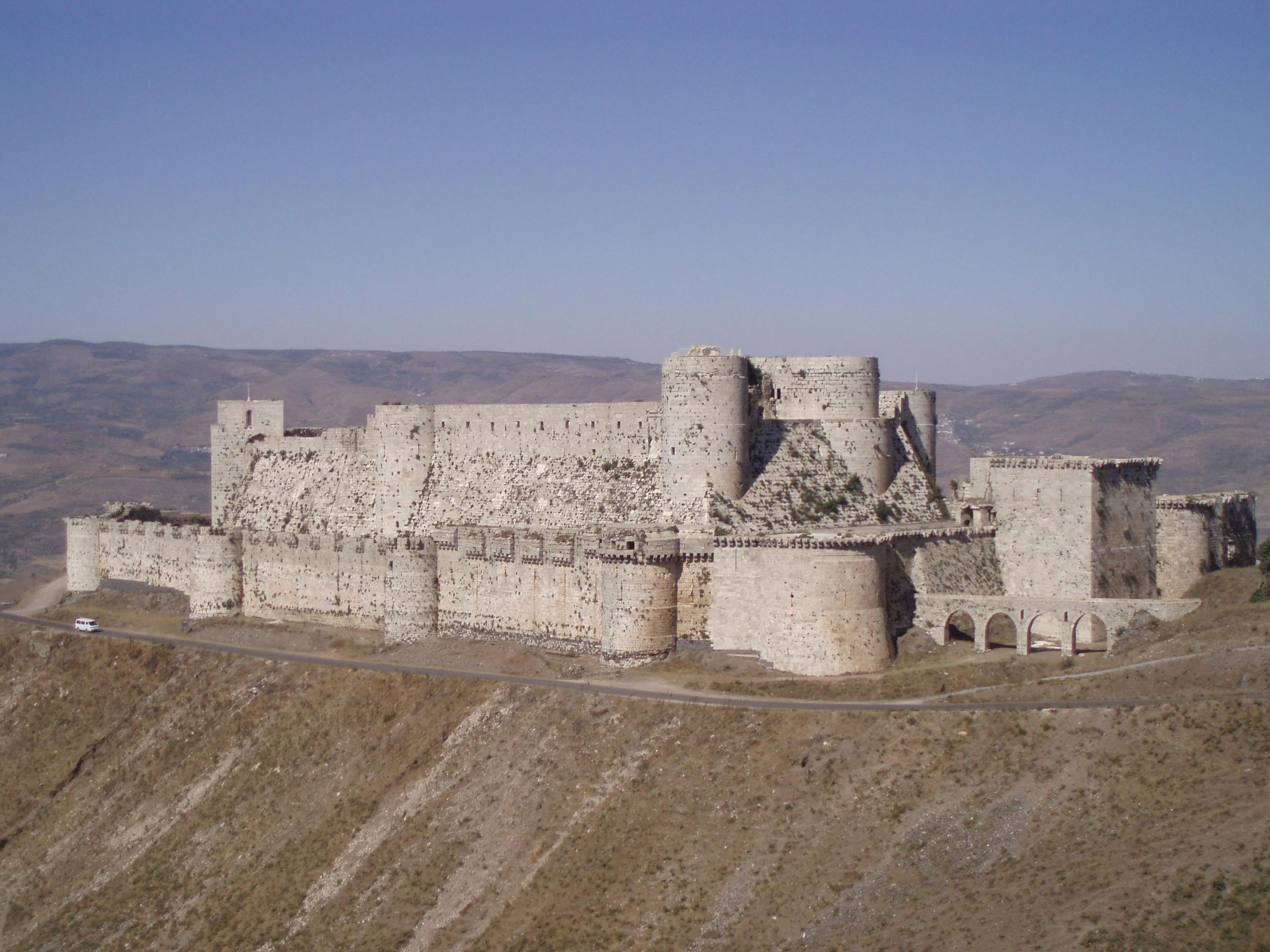
The Crusades were a series of military campaigns fought by European Christians in the 11th, 12th, and 13th centuries to try to recapture the Holy Land from the Muslims. Castles were an important part of the Crusades; they served as bases of operations for military campaigns and provided a safe place for the Crusaders to live and train.
Castles were critical to the success or failure of the Crusades. The most well-known castles from the Crusades are those of the Knights Templar, like the Castle of the Templars in Jerusalem and the Castle of the Hospitallers in Acre. The victories gained through the use of castles were often short-lived, and in the end, Muslim forces drove the Crusaders out of the Holy Land.
The Crusades
There were nine major crusades in total:
- The First Crusade – 1096-1099
- The Second Crusade – 1147-1149
- The Third Crusade – 1189-1192
- The Fourth Crusade – 1202-1204
- The Fifth Crusade – 1217-1221
- The Sixth Crusade – 1228-1229
- The Seventh Crusade – 1248-1254
- The Eighth Crusade – 1270
- The Ninth Crusade – 1271-1272
The first crusade
The First Crusade was a military effort by European Christians to retake the Holy Land from the Muslims in the late 11th and early 12th centuries. The crusade was led by Godfrey of Bouillon, Bohemond of Taranto, and Raymond of Toulouse. The European nobles responded to a call for help from the Byzantine Empire, which was being attacked by Seljuk Turks.
The First Crusade was the most successful. When the Crusaders took over Jerusalem, they were able to set up a Christian kingdom in the Holy Land. But the kingdom didn’t last long, and over the next few hundred years, the Muslims slowly took control of it.
The Second Crusade
The First Crusade began in response to the Muslim conquest of the County of Edessa in 1144. King Louis VII of France and Emperor Conrad III of Germany led an army made up of soldiers from many different European countries. The Second Crusade was less successful. The Crusaders fought the Muslims many times, but they were never able to take Edessa back.
The Third Crusade
The Third Crusade took place in response to the fall of Jerusalem to the Muslim leader Saladin. The Crusade was led by King Richard the Lionheart of England, King Philip II of France, and Emperor Frederick Barbarossa of Germany. The Crusaders were able to retake the city of Acre, but they were unable to retake Jerusalem.
The Fourth Crusade
The Fourth Crusade was meant to be the biggest and most powerful crusade so far, but it didn’t go as planned. The crusaders set out to take the Egyptian city of Damietta because they thought it was the key to capturing Jerusalem, but they were not able to take the city and were forced to retreat.
During their retreat, the Byzantine prince Alexius IV asked if they would help him overthrow his uncle, the Byzantine emperor Isaac II. In exchange, he would give them money and military help. The crusaders agreed, and instead of going to the Holy Land, they attacked Constantinople, the capital of the Byzantine Empire.
The crusaders overthrew Isaac II and put Alexius IV in his place, but the people of Byzantium soon turned against the crusaders and the new emperor. Alexius IV was overthrown and killed, and the crusaders were forced to leave Constantinople.
The Fifth Crusade
The Fifth Crusade was led by King Andrew II of Hungary and Duke Leopold VI of Austria. The Crusaders were able to capture the Egyptian city of Damietta, and they hoped to conquer all of Egypt. Their march to Cairo did not go as planned, as Al-Kamil flooded the Nile Valley, which forced the Crusaders to seek a peace treaty.
The Sixth Crusade
The Sixth Crusade was led by Holy Roman Emperor Frederick II. The Sixth Crusade was somewhat more successful than the previous ones. Frederick II was able to negotiate a peace treaty with the Muslim leader al-Kamil. This gave the Christians control of the cities of Jerusalem, Bethlehem, and Nazareth, but this treaty did not last long, and the Christians were eventually forced to leave the Holy Land.
The Seventh Crusade
The Seventh Crusade was led by King Louis IX of France. The Muslims won several battles against the Crusaders and took the king and most of the army captive. After paying a ransom, Louis and his men were let go, and Damietta was evacuated.
Most of the Crusader army went back to France, but Louis stayed in the Holy Land to try to get people to help him try again to take Jerusalem. But when his mother, Blanche of Castile, died in 1254, he had to go back to France. So, the Seventh Crusade was a failure in the end.
The Eighth Crusade
The Eighth Crusade was led by King Louis IX of France. Instead of going to the Holy Land, he landed in Tunis because of rumours that the Caliph of Tunis, Muhammad I al-Mustansir, would convert to Christianity if the Crusaders helped him fight the rebels.
In July 1270, Tunisian forces surrounded the Crusaders when they arrived. Louis died on August 25, 1270. His brother Charles of Anjou who had arrived the day before, signed a peace treaty, and returned to France.
The Ninth Crusade
After Louis XI of France died, the Ninth Crusade was started by Edward I of England. Edward spent the winter in Sicily, and in the spring of 1271, he went to Acre to gather an army. A year after he arrived in Acre, Edward Edward was forced to negotiate with Mamluk Sultan Baybars I when he ordered his assassination. When Edward heard that King Henry III was very sick, he went back to England and never went back to the Holy Land again.
The Ninth Crusade was the final and least successful major crusade. Overall, the Crusades were a long and troubled time in the history of Europe and the Middle East. They had a big impact on the culture and politics of the area.
Who took part in the Crusades?
The Crusades were primarily fought by European Christians, specifically knights from France and Italy. They were called to action by the Pope, who promised them indulgences (a reduction of time spent in purgatory) in return for their service.
Many knights saw the Crusades as a way to gain wealth, power, and prestige. In addition to knights, the Crusades also involved soldiers from other classes, as well as peasants and other non-combatants who joined the crusade for various other reasons. Crosses were worn as a sign of the church by those who participated in the armed pilgrimage. Some Muslims also fought in the Crusades, either as allies of the Christian armies or as members of their own armies.
What was the purpose of a crusade?
The Crusades were a series of military campaigns that European Christians fought in the 11th, 12th, and 13th centuries. The main goal of the Crusades was to try to take back the Holy Land from the Muslims and give Christians control over the area. The Pope called for the Crusades, which were seen by many Europeans as a holy war against the infidels. Aside from religious reasons, the Crusades were also driven by political, economic, and social factors, such as the desire to gain wealth, power, and prestige. Overall, the Crusades were a complicated and tumultuous time in European and Middle Eastern history. armies.
How long did the Crusades last?
The Crusades lasted from the 11th to the 13th century. Individual crusades could last for a few months to several years. For example, the First Crusade, which was the most successful of the Crusades, lasted from 1096 to 1099, a total of three years. Other crusades, such as the Fourth Crusade, which was diverted to Constantinople instead of the Holy Land, lasted for several years but ultimately failed to achieve their goals. Overall, the Crusades were a long and tumultuous period in European and Middle Eastern history.
More castle articles
The Tower of London
The Tower of London is a secure fortress, royal palace, and infamous prison in the heart of London. Tickets to this attraction allow you to explore this iconic castle and world heritage site, so you can find out everything there is to know about its history. If you...
Chepstow Castle
If like me you love castles then Chepstow castle should most definitely be on your list of castles to visit.
Kidwelly Castle
If you are looking for a new castle to visit, then you might want to consider taking a look at Kidwelly Castle.
Pembroke Castle
If you love to go exploring the history that the castles in Wales have to offer, then you might be interested in learning more about Pembroke Castle.
Laugharne Castle
Are you a castle fanatic that is looking for their next adventure? If this is the case, somewhere that you might want to consider visiting is Laugharne Castle.
Castle Coch
Whether you live in Wales or anywhere else, one of the castles that you should have on your to-visit list is Castle Coch, or Castell Coch.

